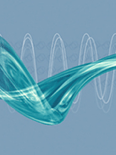
Annual Review of Fluid Mechanics
Scope & Guideline
Advancing the Frontiers of Fluid Dynamics
Introduction
Aims and Scopes
- Theoretical and Computational Fluid Dynamics:
The journal emphasizes advancements in theoretical frameworks and computational techniques, including simulations, modeling, and numerical methods, that enhance our understanding of complex fluid dynamics phenomena. - Multiscale and Multiphase Fluid Dynamics:
There is a strong focus on multiscale interactions and multiphase flows, exploring how fluids behave in various contexts such as biological systems, engineering applications, and environmental processes. - Turbulence and Flow Instabilities:
A significant portion of the research published addresses turbulence, including its statistical properties, modeling, and the mechanisms behind flow instabilities, which are crucial for predicting fluid behavior in real-world applications. - Biofluid Mechanics and Biological Applications:
The journal explores the fluid dynamics associated with biological systems, including the mechanics of flight in animals and the flow of biological fluids, contributing to fields like medicine and bioengineering. - Environmental Fluid Dynamics:
Research on fluid dynamics in environmental contexts, such as oceanic and atmospheric flows, addresses critical issues such as climate change, pollution dispersion, and energy conversion.
Trending and Emerging
- Data-Driven Modeling and Machine Learning:
Recent publications indicate a growing interest in using data-driven approaches and machine learning techniques to enhance fluid dynamics modeling, particularly in complex systems where traditional methods may fall short. - Fluid Dynamics in Biological Contexts:
There is an increasing emphasis on understanding fluid dynamics within biological systems, such as the mechanics of insect flight and the flow of cerebrospinal fluid, underscoring the relevance of fluid mechanics in health and biological research. - Climate and Environmental Fluid Dynamics:
Research addressing fluid dynamics related to climate change, including ocean currents and atmospheric phenomena, has gained traction, reflecting the urgent need to understand fluid behaviors in the context of global environmental challenges. - Non-Newtonian and Complex Fluid Dynamics:
Emerging studies on non-Newtonian fluids and complex fluid behaviors, such as those found in industrial applications and natural systems, highlight the evolving challenges and innovations in this area of fluid mechanics. - Interdisciplinary Applications of Fluid Mechanics:
The journal is increasingly publishing works that apply fluid mechanics principles to diverse fields, including aerospace, biomedical engineering, and environmental science, showcasing the versatility and importance of fluid dynamics in solving real-world problems.
Declining or Waning
- Traditional Fluid Mechanics Applications:
There has been a noticeable decrease in papers focused solely on classical fluid mechanics applications, such as basic flow theory and simple geometric configurations, as researchers increasingly pursue more complex and interdisciplinary topics. - Experimental Fluid Mechanics:
The frequency of experimental studies has waned, with a shift towards computational approaches and theoretical modeling, reflecting advancements in simulation technologies that allow for high-fidelity predictions without extensive experimental setups. - Basic Fluid Dynamics Education:
There appears to be a decline in publications aimed at foundational fluid dynamics education, such as introductory texts and pedagogical studies, possibly due to a growing focus on specialized research and advanced topics.
Similar Journals

Fluid Dynamics
Charting the course of fluid dynamics research.Fluid Dynamics is a distinguished journal that has been at the forefront of research in the field of fluid flow and transfer processes since its inception in 1966. Published by MAIK NAUKA/INTERPERIODICA/SPRINGER, this journal serves as a valuable platform for engineers, scientists, and researchers dedicated to advancing the understanding of mechanical and fluid dynamic phenomena. With a Q3 ranking in key categories such as Fluid Flow and Transfer Processes, Mechanical Engineering, and Physics and Astronomy, Fluid Dynamics holds a significant position in the academic community, attracting submissions that push the boundaries of knowledge and application. Although it does not currently offer open access options, the journal is recognized for its robust editorial standards and impactful contributions to the field, making it essential reading for anyone involved in fluid dynamics research. Given its consistent publication through to 2024, Fluid Dynamics continues to inspire innovation and collaboration in an ever-evolving scientific landscape.
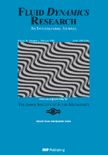
FLUID DYNAMICS RESEARCH
Fostering Collaboration in Fluid Dynamics ResearchFLUID DYNAMICS RESEARCH, published by IOP Publishing Ltd, is a pivotal journal dedicated to advancing the understanding of fluid dynamics through interdisciplinary research that spans several domains including mechanical engineering and physics. With an ISSN of 0169-5983 and E-ISSN 1873-7005, this journal provides a vital platform for researchers aiming to disseminate new findings and theoretical advancements in fluid flow and transfer processes. As of 2023, FLUID DYNAMICS RESEARCH holds a commendable position within the academic community, ranked Q3 in fluid flow and transfer processes, mechanical engineering, and miscellaneous physics and astronomy categories. The journal showcases a diverse array of articles that not only inspire collaboration among professionals and students but also ensure that theoretical and experimental studies are accessible for further development in the field. Operating from the United Kingdom, the journal offers a unique opportunity for scholars worldwide to contribute to the vibrant community dedicated to understanding the complexities of fluid dynamics, even as it anticipates converging its years of research from 1986 to 2024.
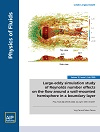
PHYSICS OF FLUIDS
Pioneering Discoveries in Fluid Flow and TransferPHYSICS OF FLUIDS is a premier journal published by AIP Publishing that serves as a vital resource for the fluid mechanics community. With an impressive impact factor and a consistent ranking in the Q1 quartile across multiple related disciplines—including Computational Mechanics, Condensed Matter Physics, Fluid Flow and Transfer Processes, Mechanical Engineering, and Mechanics of Materials—this journal is renowned for disseminating high-quality research in the dynamic field of fluid dynamics. Covering a wide range of topics, from fundamental fluid mechanics to advanced computational modeling, PHYSICS OF FLUIDS plays a crucial role in advancing understanding and fostering innovation in both academic and industrial applications. With its strong reputation and significant readership, this journal is essential for researchers, professionals, and students seeking to stay updated on the latest developments in fluid physics.
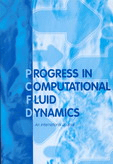
PROGRESS IN COMPUTATIONAL FLUID DYNAMICS
Advancing the Frontiers of Fluid Dynamics ResearchPROGRESS IN COMPUTATIONAL FLUID DYNAMICS, published by InderScience Enterprises Ltd, is a vital journal in the realms of Computer Science Applications and Condensed Matter Physics. Established in 2001, this journal serves as a platform for disseminating innovative research findings and technological advancements in computational fluid dynamics, targeting both theoretical and applied aspects. With a current impact factor positioning it in the Q4 quartile for its fields, it captures a wide array of topics including numerical methods, simulation techniques, and real-world fluid dynamics applications, fostering dialogue among researchers, practitioners, and educators alike. Although it does not provide Open Access options, it remains an important resource for those investigating fluid dynamics phenomena. As it continues to evolve through 2024, PROGRESS IN COMPUTATIONAL FLUID DYNAMICS is positioned to contribute significantly to the scientific community, addressing core challenges while promoting collaboration and knowledge exchange.
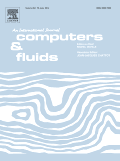
COMPUTERS & FLUIDS
Exploring Innovative Solutions in Computer Science and EngineeringCOMPUTERS & FLUIDS, published by PERGAMON-ELSEVIER SCIENCE LTD, is a premier journal in the fields of Computer Science and Engineering, with a distinguished history dating back to 1973. Its Q1 ranking in both Computer Science (Miscellaneous) and Engineering (Miscellaneous) illustrates its high impact and relevance, being positioned among the top tier of scientific publications. With a robust focus on the intersection of computational methods and fluid dynamics, this journal serves as a vital platform for researchers, professionals, and students dedicated to advancing knowledge and technology within these domains. Although it is not an open-access journal, its articles are accessible through various academic institutions and libraries, ensuring that vital research reaches its intended audience. Readers can explore innovative methodologies and applications, reinforcing the journal's commitment to enhancing the understanding of fluid mechanics through cutting-edge computational approaches. For more details, visit the official website of COMPUTERS & FLUIDS to stay abreast of the latest research advancements.

ATOMIZATION AND SPRAYS
Exploring the Dynamics of Fluid MechanicsATOMIZATION AND SPRAYS, published by BEGELL HOUSE INC, stands at the forefront of research in the dynamic field of chemical engineering, particularly focusing on the intricate processes of atomization and the mechanics of droplet dynamics. Established in 1996, this prestigious journal aims to disseminate innovative findings and methodologies that drive advancements in applications ranging from spray technologies in industrial processes to environmental technology and energy conversion systems. With a current Impact Factor that reflects its significance within the community—ranked in the Q3 quartile—it serves as a comprehensive resource for researchers, professionals, and students eager to deepen their understanding of fluid mechanics and spray applications. Though not an open-access publication, it provides critical insights and a platform for scholarly communication and exchange in its converged years, fostering collaboration and innovation within the domain.
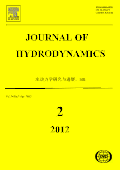
Journal of Hydrodynamics
Illuminating the Path of Hydrodynamic ResearchWelcome to the Journal of Hydrodynamics, a premier academic journal dedicated to pioneering research in the fields of Condensed Matter Physics, Mechanical Engineering, Mechanics of Materials, and Modeling and Simulation. Published by Springer, this esteemed journal has been a vital resource since its inception in 1990 and boasts a notable Q1 ranking across its relevant categories, underscoring its importance in advancing knowledge and innovation. With a robust Scopus ranking reflecting its impact—such as being in the 82nd percentile in Mathematics: Modeling and Simulation and the 75th percentile in various engineering disciplines—the journal serves as a critical platform for researchers, professionals, and students. While not currently an open-access publication, the Journal of Hydrodynamics remains committed to fostering scholarly dialogue and disseminating high-quality research that shapes the future of its field. Our mission is to provide a comprehensive forum for the discussion of theoretical and applied hydrodynamics, potentially influencing both academic inquiry and practical applications worldwide.

Journal of the Serbian Society for Computational Mechanics
Exploring New Dimensions in EngineeringJournal of the Serbian Society for Computational Mechanics, published by the Serbian Society for Computational Mechanics, is a vital platform for advancing research and knowledge in the field of computational mechanics. Established in 2012, this journal serves the academic community by providing a forum for innovative studies, methodologies, and applications within computational mechanics, presenting valuable insights for researchers, professionals, and students alike. With an ISSN of 1820-6530 and a ranking of Q4 in Computational Mechanics, it carries an essential influence in the engineering realm, despite its current rank of 71 out of 89. The journal's commitment to scholarly excellence aims to foster collaboration and encourage interdisciplinary research, making it an important resource for those invested in the evolving landscape of computational methodologies. Although the journal currently does not offer Open Access options, it remains dedicated to disseminating knowledge that will resonate within the local and global scientific community.
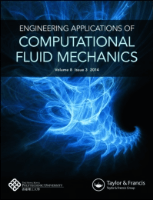
Engineering Applications of Computational Fluid Mechanics
Pioneering Solutions in Fluid Mechanics ApplicationsEngineering Applications of Computational Fluid Mechanics is an esteemed journal published by Taylor & Francis Ltd that serves as a vital resource for researchers, professionals, and students in the field of fluid mechanics and its computational applications. With an ISSN of 1994-2060 and an E-ISSN of 1997-003X, this journal has established its reputation through its rigorous peer-review process and commitment to Open Access since 2015, facilitating widespread dissemination of cutting-edge research. Based in the United Kingdom, the journal is indexed in leading databases and has achieved a significant impact in its categories, ranking in the top quartile (Q1) for both Computer Science (miscellaneous) and Modeling and Simulation as of 2023. Notably, its Scopus rankings place it in the top 4% of Mathematics/modeling and simulation, highlighting its importance in advancing knowledge and innovation within the discipline. The journal invites contributions that explore both theoretical and practical aspects of computational fluid dynamics, fostering collaboration and intellectual growth within the community.

International Journal of Fluid Mechanics Research
Elevating Scholarly Communication in Mechanical EngineeringThe International Journal of Fluid Mechanics Research, published by BEGELL HOUSE INC, is a pivotal platform for the dissemination of innovative research within the fields of Mechanical Engineering and Physics. With a focus on the intricate dynamics of fluid behavior, this journal has been a cornerstone of scholarly communication since its inception in 1996, continuing to engage a global audience of researchers and professionals through to 2024. With a respectable Impact Factor reflecting its significant contributions to the disciplines—ranking in Q3 for both Mechanical Engineering and Miscellaneous Physics and Astronomy categories—this journal presents a unique opportunity for authors to share their findings in a peer-reviewed environment. Although it does not currently offer Open Access options, all published articles are carefully curated, ensuring high-quality research is accessible to its readership. As the journal navigates the complexities of fluid mechanics, it fosters an interdisciplinary dialogue, bridging theoretical frameworks with practical applications, thereby enhancing understanding and innovation in related fields.